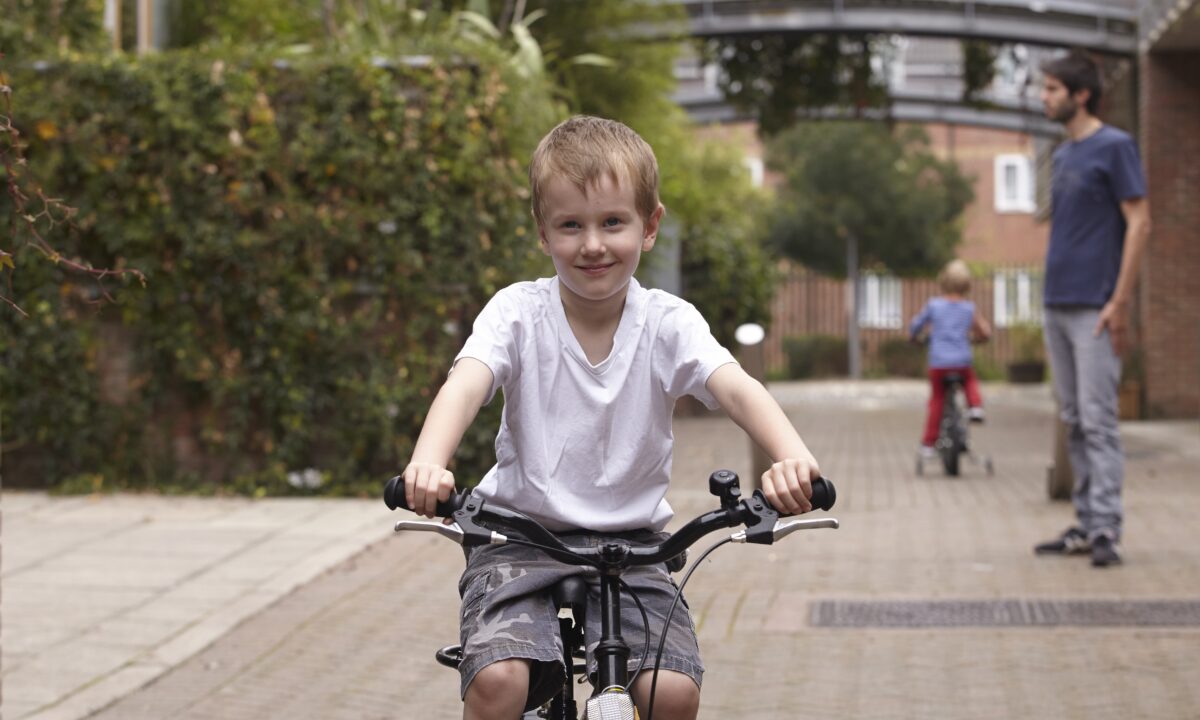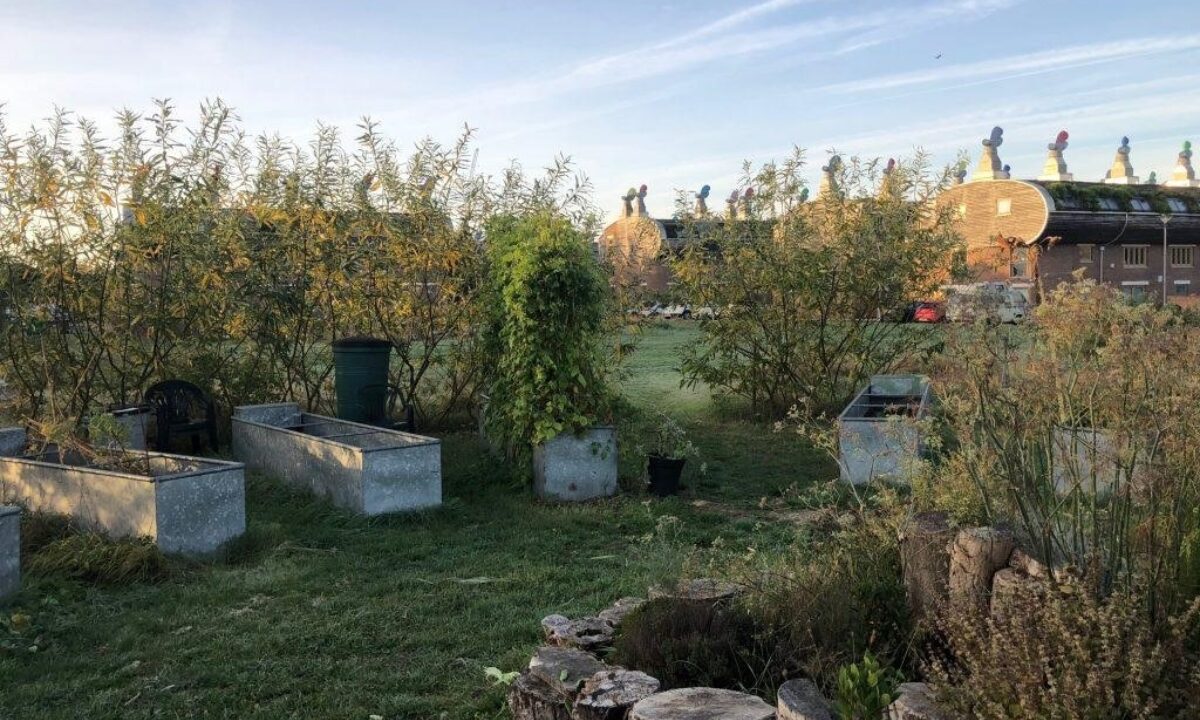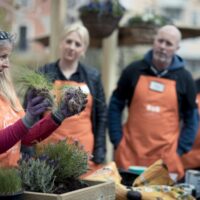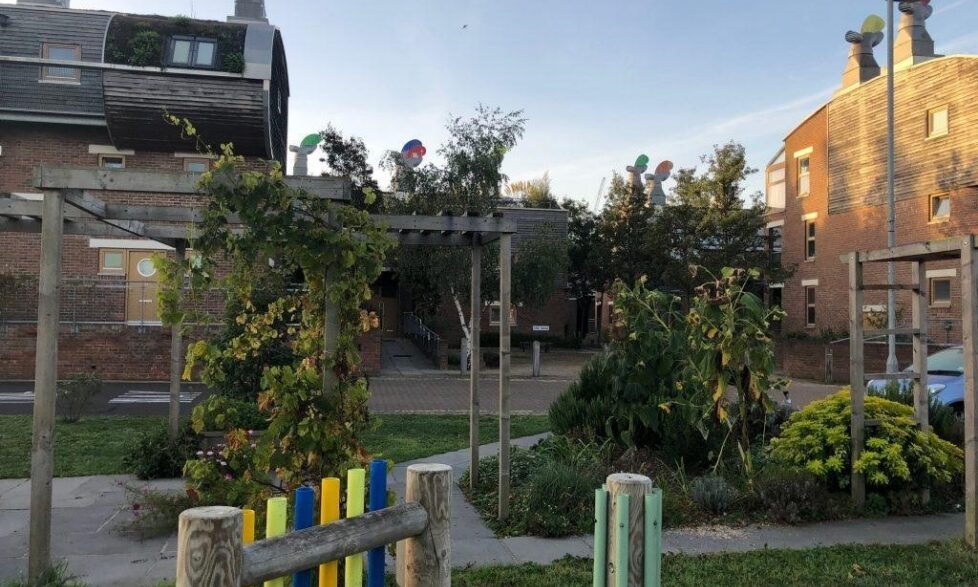Bye bye BedZED
I took a final stroll around BedZED, my home for the last four years on a crisp, early morning recently. There are many things I’ll miss about living here and it’s been an important part of my life.
I learned about BedZED, the 100-home ecovillage in Sutton, south London, soon after it was completed in 2002 whilst on work experience at a chemical engineering company in Finland.
With little to do and plenty of time to browse the internet, I stumbled across WWF’s 2004 Living Planet Report which featured BedZED as a case study. Feeling alarmed by the state of our ecosystems, I was inspired to hear of practical actions being taken. I kept a mental note of Bioregional, one of the key partners in developing BedZED, and went off to University to study engineering.
Four years later, eager to pursue a career in sustainability, I was over-the-moon to land my first job at BedZED-based Bioregional – which, along with housing association Peabody and architects ZEDfactory, had conceived and overseen the development.
So I worked there for several years, commuting in from various leaky homes across South London. Part of my job was being a tour guide, taking groups around and discussing different aspects of the design. Some of our work at Bioregional involved taking the learnings into other built environment projects.
Being based at BedZED felt important for someone working in sustainability, providing first-hand experience of the benefits and challenges of designing more sustainable communities. Some years later, having moved on from Bioregional but still working in the area, I decided to buy a home in BedZED.
While much has been written about BedZED over the years, fairly little of this has been about what it’s like to actually liver there. So as a job change takes me away from the area, here are five things that I’ll miss the most.
BedZED looks different
BedZED’s unique character comes from the combination of its colourful tops, curved edges, green roofs, weathered oak cladding, cabin door-windows, walkways, bridges and roof gardens. There’s a lot to enjoy looking at.
Whenever I’ve explained where I live to other locals they will often say: “Oh, that place with the colourful things on the roofs?“ Those are wind cowls, helping to provide ventilation for the buildings. They face into the wind and you’ll often find a line-up of small birds perched along the ridge. They are the most iconic feature.
The way that BedZED looks does have something to do with its sustainability but not as much as you might imagine. Curved edges and bridges aren’t environmental features; they are attractive features that added to the costs.
As a comparison, one of the developments Bioregional was involved with after BedZED was One Brighton with 172 apartments plus offices and community facilities. Many of the same principles were applied, yet these flats appear much more conventional and the project turned a profit - impressive given that it was built during the depths of a recession.
The warmth
The all-year-round warmth and natural light in BedZED homes is one of the most noticeable differences. For the last four years I haven’t had to think about heating. There was no heating system to turn on! I have found it warm enough in the winter and certainly hot enough in the summer. This is thanks to the homes being south-facing with thick, insulated walls, good quality windows and sunspaces to help trap the heat. Every home should be built like this and it’s a great pity to be moving to a home that requires heating.
The neighbours and the BedZED bar
Once a month, an ex-resident runs a community bar in the BedZED Pavilion. Children play in the communal field outside while the adults unwind. Lately, there’s even been a chef cooking dinner too. What a great way to get to know the neighbours. I will miss the BedZED bar and the lovely neighbours I’ve been able to spend time with there.

Car-free streets
The road skirts around the outside of the estate with car-free walkways between the homes. Many have climbing plants that reach from the ground level gardens to the roof gardens, creating a little oasis of greenery. Children can play safely in these walkways. As the sun sets, there’s a feeling of intimacy around the estate as dinners are being prepared. Despite the homes being close together, there’s enough privacy and it doesn’t feel like you’re living on top of each other.
The car-free streets are one of the reasons I believe it’s easy to meet and get to know neighbours.
The BedZED field
For many years, this field was a blank canvas. There were many inspired ideas from residents about what to do with it, but little action. However, in the last few years, the field has turned into an ecologically-diverse permaculture garden. Residents Tony and Danielle have been instrumental in making this happen. There are weekly gardening sessions every Saturday for anyone that would like to join in. I have a huge appreciation for everyone that goes out to make this space what it is.

Final thoughts
Living at BedZED, like many places, isn’t always bliss. You’ll hear neighbours complain about Peabody, who manage the estate. The surrounding area is not much to speak of, in my opinion. Yet the homes are warm and the immediate landscape is clean and green. The neighbours are friendly and well-connected online and in-person. There’s a fantastic community centre, in the Pavilion, that’s in daily use by local residents. Also a green gym and permaculture garden. It’s an attractive place to live, particularly for families. One neighbour, I’m aware, has moved house three times within the development as their family has grown.
For a few years, I managed nearby Sutton Community Farm, initiated by Bioregional and is now a thriving community-owned business. I often said to visitors that if it wasn’t for BedZED the farm would probably not exist. The ecological footprint studies of BedZED residents, which showed food being the largest impact category, provided an important rationale to want to improve the local food system through a community farm.
Having the experience of BedZED (and Carshalton Lavender and other Bioregional enterprises) gave us more confidence to start a farm. In designing for sustainable communities, we found that it’s not enough to just build homes that perform well on energy and materials. To achieve One Planet Living, it’s necessary to design communities with much more in mind.
Sometimes pessimistic folk remind me of the inconvenient truth that BedZED had cost over-runs and some technical failures. But Bioregional has always been open about these and tried to learn from them.
I’m an optimist. My take is that BedZED was an important, pioneering development that has gone on to inspire many. Some technologies did not work well and some were over-ambitious. But it’s important to experiment; that’s often how we learn the best lessons. Thankfully, many of the important aspects do work and BedZED provided a comfortable, warm and friendly place to live.
Today, sustainable builds are still not happening with the ambition or at the pace they should be. My hope is that we continue to learn from BedZED but also remember that it’s over 15 years old now. We need other new eco-developments to look to for inspiration. Bioregional have helped develop others, such as One Brighton and North West Bicester. Let’s hope there are thousands more to come. The world needs this.




